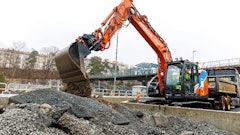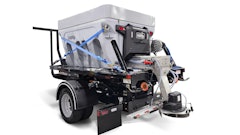Thus far, construction economists seem mixed in their outlook for 2019. More conservative forecasts call for single-digit growth over 2018, as activity begins to stabilize in some industry sectors and cool in others. Only time will tell if such predictions will hold true — particularly if an infrastructure funding boost becomes reality in the New Year. If it does, most forecasts could go out the window, depending on when funding becomes available and the dollar amount secured.
Overall, transportation fared reasonably well in 2018, and looks solid going forward. Out of the $20 billion designated for infrastructure, highways received an additional $4 billion, with a similar amount expected in FY 2019. In addition, voters approved 81% of roughly 540 state and local transportation-related ballot initiatives during the 2018 primaries and mid-term elections, meaning not only further funds but a strong appetite for continued transportation investment.
That appetite will likely become more ravenous. According to a new report from the National Academies of Sciences, Engineering, and Medicine, “The future of the U.S. Interstate Highway System is threatened by a persistent and growing backlog of structural and operational deficiencies and by various looming challenges, such as the progress of automated vehicles, developments in electric vehicles, and vulnerabilities due to climate change. Unless a commitment is made to remedy the system’s deficiencies and prepare for these oncoming challenges, there is a real risk that the nation’s interstates will become increasingly unreliable and congested, far more costly to maintain, less safe, incompatible with evolving technology, and vulnerable to the effects of extreme weather.” (Learn more about the report at www.ForConstructionPros.com/21035668.)
Clearly, conditions on U.S. roadways and bridges are only going to get worse. There is urgent need to not just “stem the bleeding” by repairing existing structures but to replace and expand outdated infrastructure.
There are positive signals coming from Capitol Hill that more funds may be coming. The Trump administration indicated it is preparing to try again to secure $1 trillion more in funding to upgrade the country’s road, rail and energy infrastructure. While an earlier attempt placed significant onus on state and local governments to develop revenue sources as part of the overall package, those familiar with the administration’s recent efforts claim more federal funds will be included this time, which could make the plan more palatable in the new Congress, particularly among Democratic leaders in the House.
Still, it’s hard for anyone to get their hopes up given the extreme partisanship seen in Congress throughout the past decade. Unless the infrastructure proposal is seen as a substantial win for both sides, it’s unlikely to secure the support needed to make it through the House and Senate. This would prove a tremendous loss for the American public.
The Republicans and Democrats have signaled a willingness to come together on this issue. Be sure to urge your state representatives to make infrastructure investment a priority, because lives and livelihoods hinge on it.
We’ll share more about what may be to come for both the construction industry and infrastructure development in our annual state of the industry reports next month.





















